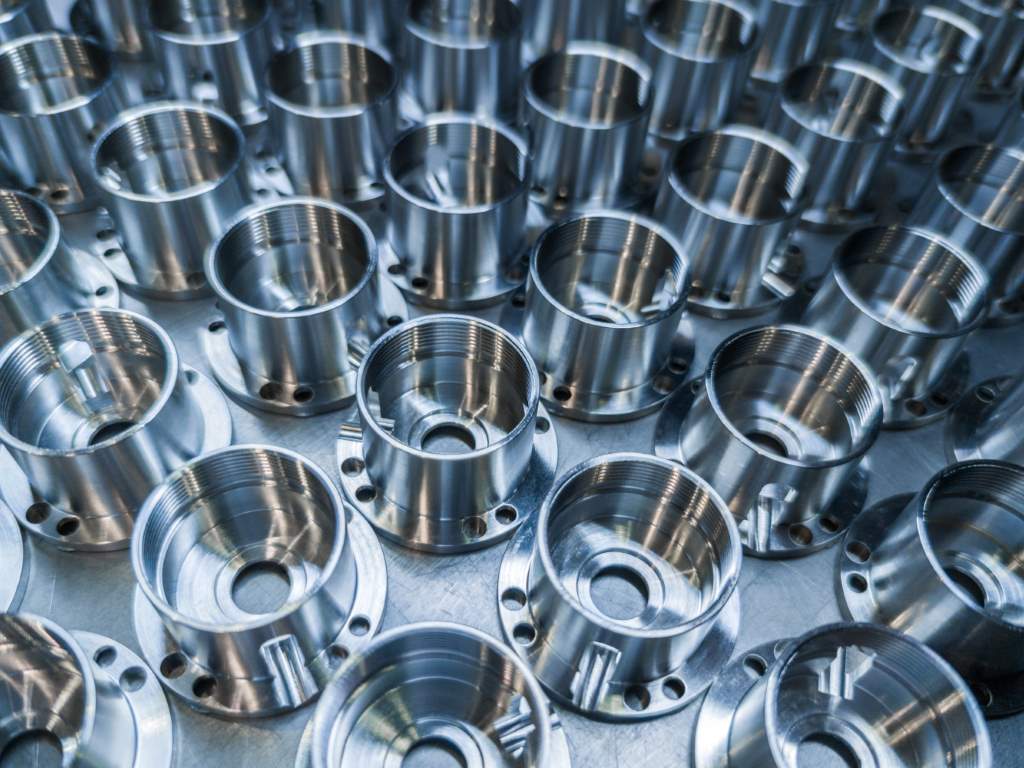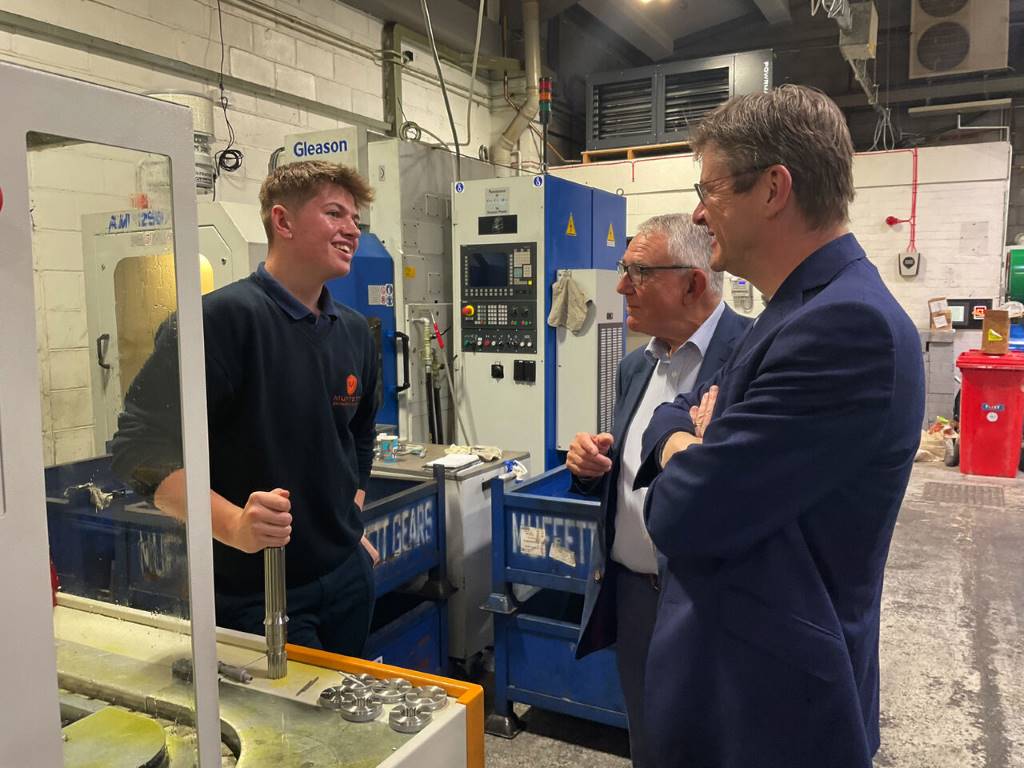Daily grind
Lincoln Crankshaft and Machine (LC&M) has recently invested £900,000 in a new orbital grinding machine with a vast 11m machining capacity.
Machining crankshafts – particularly large scale varieties – is not for the faint-hearted. If the logistical challenge of moving the huge steel forgings around the shopfloor wasn't enough, there are the micron level dimensional and geometric tolerances to wrestle with. Lincoln Crankshaft and Machine (LC&M) is a company that knows crankshafts. Not only that, it has recently invested £900,000 in a new orbital grinding machine with a vast 11m machining capacity.
In the UK, finding the expertise to handle large crankshafts is virtually impossible, but Lincoln Crankshaft and Machine is a company well-equipped to meet the challenge. The company was formed in 2003 after two established crankshaft companies – Clarke's, based in Lincoln and Mitchell Shackleton, located in Manchester, went out of business within five months of each other.
Success story
With managing director, Mick Harwood at the helm, LC&M has grown meteorically over the past seven years. In 2003, its turnover was £100K, but today this has risen to £8.5 million. The company employs 54 people across its two sites in Lincoln and Manchester and exports around 90% of its products to customers spanning the entire globe – predominantly in the oil and energy, transport, marine, industrial, and mining sectors. This was recognised in 2008 when LC&M won the prestigious Queens Award for enterprise ‘international trade'. LC&M's customer base includes names such as Dresser Rand, Cameron Compression Systems in the US and Mitsui in Japan.
Mr Harwood believes that the company's success has been largely due to retention of a highly skilled workforce and the fact that it invests up to 20% of its profits, every year, back into the business. “The work that we do is highly skilled and specialised,” he explains. “Apart from the logistics of handling shafts and components up to 25 tonnes in weight, the machining itself is ultra precise. A crankshaft or rotor shaft not only needs to be concentric within microns but also superfinished to exacting tolerances.”
Across its two sites, LC&M manufacture shafts for a number of applications including diesel engines, compressors, pumps, mechanical presses, electric motor shafts, fan shafts and rotor shafts. The Lincoln factory handles all the large scale machining with the Manchester facility taking care of smaller scale components.
Turn on to turnkey
The company comprises three main divisions: crankshaft machining; precision forged products; and crank refurbishment. Although relatively small at the moment, Mr Harwood sees the refurbishment service as a real growth area. “Again it's a very niche service,” he reveals. “On receipt of a defective crank, the first thing we'll do is carry out an in-depth inspection analysis of the part. In the first instance this will involve magnetic particle inspection (MPI) to see if there are any surface cracks in the material and if this is OK, a full dimensional check will be made.
“Following this, we'll make recommendations to bring the part back to ‘as new' condition and then finally offer a quotation. This may involve re-machining, re-grinding or re-plating and although ultimately it's the customer's choice whether to proceed or not, refurbishment can provide a real cost-effective alternative to manufacturing a new crank from scratch.”
Mr Harwood describes LC&M's capability as turnkey and in terms of offering a total service, this is an accurate description as the company handles everything from ultrasonically testing forgings as they are received from the supplier in the ‘black' condition, through to rough and finish machining (turning, milling and grinding), stress relieving, hardening and crack detection. On the machining front, turning capacity can accommodate forgings up to 25 tonnes in weight, 2m in diameter and a massive 11m in length and milling capability encompasses workpieces of 1m diameter by 14m length.
Typically, large crankshafts are very expensive and time consuming to machine, so quality control and inspection is absolutely essential at all stages of manufacture to avoid costly errors. In this regard LC&M has its bases fully covered. As well as providing in-house ultrasonic and magnetic particle testing, the company offers 3rd party inspection from Lloyds Register for Shipping, Det Norske Veritas and Germanischer Lloyd.
Achilles heel
Up until recently, if LC&M had an Achilles heel, it would have been its grinding capacity which could only accommodate shafts of up to 5m in length. This was proving to be a real headache which could only be alleviated by subcontracting the grinding operation overseas which proved to be both expensive and time-consuming. Its refurbishment service was also being held back by lack of capacity – anything over 5m had to be sent to a company in Germany for grinding.
With shafts and crankshafts, grinding is a critical process. Although often only removing around 1mm of material from the OD, the process provides not only the dimensional accuracy required but also the surface finish. Crankshafts comprise a series of journals and pins and a major drawback with machining is that as the pins are offset from the main centre line of the shaft, each pin and shaft needs to be machined – and set-up and aligned – separately.
So if there are ten pins for example, this would involve ten separate set-ups, ten re-alignments and ten re-adjustments of the steadies used to maintain that alignment, not to mention the use of counterbalance weights to compensate for the shaft running off centre.
Mr Harwood investigated a number of options, such as extending the capacity of existing machines but this proved impractical. It was time therefore to invest in a new machine but grinding machines with an 11m capacity couldn't exactly be bought off the shelf so around a year ago, Mr Harwood contacted large machine tool specialist Broadbent Stanley with a view to building a bespoke one-off machine.
Significant set-up savings
The design of the T350 Orbigrind is centred around Broadbent Stanley's Yorky range of machines but on a much larger scale. To accommodate the long shaft lengths necessary and maintain uniformity, twin heads were used, synchronised by a Siemens computerised control system, but a major advantage of the Orbigrind is the fact that multiple set-ups for different pins and journals are not required. “With this machine we simply rough grind all the main journals and get the steadies in position,” Mr Harwood enthuses. “The software calculates the positioning of each individual pin and the material removal required and does it all in one hit. The grinding wheel moves automatically to the correct position without having to break down the set-up or touch the alignment.
“Amazingly, the feed mechanism is via magnetic drive so there are no moving parts,” he continues, “and linear motors ensure smooth running over the entire length of the machine with no backlash whatsoever.” Quite literally, the machine was installed at LC&M only four weeks ago and everything about it is large from the £900,000 price tag through to the 2m deep by 20m long foundations needed to install the 60,000kg machine and the 1,600mm diameter by 115mm grinding wheels it uses in operation. The grinder has a maximum distance between centres of 11m and it can accommodate diameters up to 1.9m. Maximum component weight is 25,000kg and on crankshafts, pins up to 450mm diameter can be machined. It's no slouch on the accuracy front either. Roundness and cylindricity to ±5µm can be achieved and concentricity levels of within 5µm on plain shafts and ±12µm on crankshafts can be maintained. Chuck size is 1,200mm. Money well spent Mr Harwood believes that the machine will pay for itself in two to three years: “Although it's early days we have already achieved major savings in both set-up and machining times,” he concludes. “Gone are the days of individually clocking each bearing or pin diameter, prior to grinding, as all is accommodated within the control software. Once we're fully up to speed, I believe we can slash up to 60% off setting times alone and this will give us better throughput, a reduction in leadtime, which in turn will make us more competitive in the marketplace.” Lincoln Crankshaft & Machine
www.lcandm.co.uk













